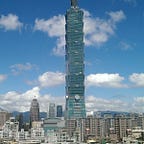HILD 12 — Discussion 2
According to Saranillio, settler-colonialism ultimately depends on an imperial power erase and replace the “modes of production” of established populations and said populations themselves that previously inhabited an area of land with another population who are “superior and thus more deserving” of said land (284). Despite the Chinese and Japanese themselves being immigrants to Hawaii, it is through an understanding of this concept that we see how the history of Hawaii is inextricably linked with the United States’s strategy to disenfranchise the aforementioned peoples, Native Hawaiian, and other established populations by gradually co-opting and monopolizing the local economy and land through white plantation owners and American companies. As the Unites States government encouraged white businesses to establish themselves in Hawaii, it also actively peddled mistrust against East Asians and Native Hawaiians to justify American control over the islands. As Chinese migrants increasingly arrived at Hawaii to escape economic, political, and natural turmoil, the idea of a ‘Yellow Peril’ began to gain popularity— that East Asians would slowly supplant and destroy Western society as Americans knew it. Chinese migrants became a boogeyman of sorts — women especially were demonized as lustful whores who would corrupt America. The Japanese were also seen paradoxically as an inferior yet formidable enemy on the horizon because of their own successful imperialist endeavors in acquiring Taiwan and the Liaodong Peninsula as strategic anchors to spread Japanese influence. It was these developments in East Asia that reinforced the ‘Yellow Peril’ and served as another convenient excuse for the United States to consolidate control over Hawaii as a way to secure its geostrategic interests in the West Pacific.
We also see how these disenfranchised populations were manipulated to fight amongst themselves despite a net positive which could be gained from their cooperation. Japanese, Chinese, and Filipino communities actively separated themselves from the Native Hawaiians and even began discriminating the latter by characterizing the latter as lazy and uncivilized . The United States actively stirred such racial tensions because it was effective in preventing these suppressed populations from effectively uniting together to organize opposition against their primary oppressor, and perhaps because the Native Hawaiians served as a convenient scapegoat for white businesses to redirect discontent against them.
Looking back to Week 1, a similar strategy was employed by the British in Jamaica to reinforce its settler-colonialism. The British were able play the Chinese and Jamaican communities against each other by presenting the Jamaicans as lazy and uncivilized (wow, how familiar) in contrast to the Chinese, who were pictured as diligent and economically successful. The latter stereotype was true in some sense — not that any group of people would be inherently more hard-working than another, but the Chinese population did establish themselves as a key part of the island’s economy as small business owners. Yet this modicum of truth within these manufactured images only reinforced the animosity between the two communities, all while British plantation owners could reap the product of their labor without a united opposition to contest their powers.
